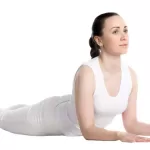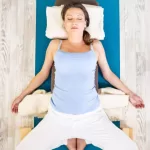Yoga has become one of the most popular forms of exercise and stress relief around. And for good reason – yoga offers a slew of health benefits, from improved flexibility and balance to reduced stress and anxiety. But not all yoga classes are created equal. Finding the right yoga studio and teachers for your needs is key to getting the most out of your practice. Here’s how to find the best classes near you.
What Type of Yoga is Right for You?
Table of Contents
ToggleWith so many different styles of yoga to choose from, it can be tricky to know which type of yoga will suit you best. Are you looking for a relaxing, gentle class or an intense workout? Do you want to focus on meditation and breathwork, or on mastering advanced poses? Consider what you want to get out of your practice.
Hatha Yoga
Hatha yoga is one of the most popular styles. It involves a series of basic poses and breathing exercises to stretch and strengthen the body. Hatha classes are great for beginners looking to improve flexibility, balance, and mind-body awareness. The pace tends to be slow and gentle.
Vinyasa Yoga
Vinyasa yoga features fluid movement that is synchronized with the breath. Classes will have you moving from one pose to the next in a flowing sequence. The intensity can range from beginner to advanced. Vinyasa is a good option if you want more energetic, dynamic movement compared to hatha .
Hot Yoga
Hot yoga is practiced in a heated room, usually around 95-100 degrees Fahrenheit with humidity around 40%. The heat helps loosen the muscles to go deeper into poses. But be prepared to sweat! Hot yoga styles like Bikram and Hout Yoga take fitness to the next level. Drink plenty of water before and after class.
Restorative Yoga
Prefer to relax and restore? Restorative yoga uses props like blocks and blankets to support you in gentle poses. The pace is super slow and focused on deep breathing and mindfulness. This is ideal for stress reduction and if you need a good stretch after intense exercise.
Yin Yoga
In yin yoga, seated and supine poses are held for extended periods of 5 minutes or more. The poses target the deeper connective tissues versus the muscles. Yin is meditative and introspective, allowing you to turn inward and tap into mindfulness.
Power Yoga
Power yoga cranks up speed, intensity, and strength-building. Classes move quickly through a series of athletic vinyasa flows. Consider power yoga if you want a high-energy cardio and strength workout blended with yoga. Advanced and experience is recommended.
Research Yoga Studios in Your Area
Once you have an idea of what type of yoga you want to try, start researching studios near you. Google “yoga near me” or search Yelp and Facebook for highly rated yogastudios in your neighborhood or city. Don’t forget to check the schedule and pricing on each yoga studio’s website to find classes that fit your availability, level, and budget.
You can also ask friends and neighbors for studio recommendations if they have a practice. Word of mouth from people you trust can be invaluable in finding quality yoga instructors.
Read Reviews Before Signing Up
Before committing, read through the Google and Yelp reviews of any studios you are considering. Pay attention to reviewers who seem to be around your age and fitness level. Are beginning students happy with the instruction? Does the studio offer modifications for different ability levels?
Comments about the teachers, atmosphere and cleanliness of the facility can give you a good feel for the overall vibe. Safety should be a top priority, so watch for any red flags around overcrowded classes or instructors pushing students into unsafe poses.
Schedule a Trial Class
Most yoga studios will let you take a first class for free or at a discounted drop-in rate. Take advantage of this to sample a few different beginner classes at studios near you before purchasing a multi-class package. Pay attention to the instructor’s teaching style and how supported you feel as a new student. A good teacher will provide individual attention and pose modifications as needed.
Ask About Class Size
For the best experience, opt for smaller class sizes whenever possible. Poses and adjustments are easier for teachers to observe and assist in classes with fewer students. Around 12 students or under is ideal for beginners. Larger studios may have big classes, so ask ahead about typical class size when you call.
Questions to Ask When Choosing a Yoga Studio
Before committing to a studio, have a list of questions ready to find out if it’s the right match. Things to ask:
- What yoga styles and class levels do you offer? How are the classes formatted?
- How experienced are your instructors? How long have they been teaching?
- What kind of training or certification is required to teach at your studio?
- What COVID precautions do you take to keep students safe?
- Do you offer beginner-specific classes and pose modifications?
- What is the average class size and student-teacher ratio?
- Do you offer yoga props like blocks and straps to use?
- Are mats provided or do students bring their own?
- Is there parking available near the studio?
- What are the membership options and drop-in rates?
Don’t be shy about calling ahead and asking questions. A quality studio should be happy to talk you through what they offer. Take your time finding a supportive space as you embark on your journey.
What to Look for in a Yoga Instructor
The skills and teaching style of the yoga instructor can make or break your experience. Look for these qualities when evaluating teachers:
Clear Communication Skills
A great instructor will provide clear, easy to follow verbal cues to guide you through proper pose alignment step-by-step. They should use anatomy terms to help you understand which muscles engage.
Attention to Form
The instructor should roam the room and gently correct students’ form as needed. Proper alignment prevents injury so don’t hesitate to ask for help. A good teacher will turn advanced poses into beginner variations.
Supportive Attitude
Teachers should offer encouragement and celebrate milestones versus criticizing limitations. Yoga is not a competition. Look for an instructor who creates a nurturing environment for students of diverse levels.
Individualized Assistance
One of the major benefits of yoga studios is getting personalized attention. The instructor should provide modifications and assist with props so you can comfortably hold poses.
Training and Experience
Ask about your potential teacher’s background. Those with 200+ hours of accredited training likely have more in-depth understanding of proper form. But a naturally gifted instructor can also be effective with fewer formal hours under their belt.
Is Drop-In or Studio Membership Right for You?
Yoga studios offer flexibility when it comes to pricing options. Consider what makes the most financial sense depending on your practice goals.
Drop-In Classes
Dropping into single classes allows you to sample different studios and styles risk-free. Expect to pay $15-25 per single session depending on the studio. Drawbacks are you won’t get to know instructors and students over time in a drop-in setting.
Class Packages
Many studios sell class packs ranging from 5 to 30 sessions at a discounted bulk rate. This can be a nice middle ground, locking in savings while allowing flexibility to periodically try new studios. Opt for 5 to 10 classes while determining if a studio is a good match before purchasing a larger pack.
Monthly or Annual Memberships
Unlimited monthly memberships offer the best value if you plan to attend classes several times per week. After any initial signup fee, expect monthly rates around $100-200 depending on location. Be sure to calculate cost per class to confirm the membership discounts classes appropriately.
Annual memberships may be paid upfront or monthly, with the lowest per-class cost. Before committing to a year, make sure the studio vibe and teachers are a great fit. Ask if any membership freeze or hold options are available for vacations, injuries, or other absences.
Equipping Yourself: Yoga Gear and Props
Having the right gear can make your yoga practice more comfortable and effective. Here is the essential equipment for beginners:
Yoga Mat – Provides cushion and grip for floor poses. Look for thicker, high-density mats with alignment markers. Avoid flimsy or slippery mats that can lead to injury.
Yoga Blocks – Help bring the floor closer for hand and foot support in standing or seated poses. Foam, cork and wood options available.
Yoga Strap – Allows you to hold onto poses that require greater flexibility. Secures around arms, legs, shoulders and feet to aid proper form.
Bolster Pillow – Supports and aligns the body in reclined poses. Rectangular shape ensures stability.
Yoga Blanket – Use to cover bolsters for softness. Can also support knees and neck or provide warmth in restorative poses.
Yoga Towel – Non-slip towel placed on top of mats during hot yoga to absorb sweat and improve traction.
Yoga Pants or Shorts – Lightweight and breathable pants allow free range of motion. Avoid loose clothing that can interfere with poses or teachers seeing form.
Yoga Tops – Close-fitting tops keep you cool and mobile while not distracting from poses. Opt for tank tops, tees, or long sleeve workout tops depending on studio temperature.
Getting the Most Out of Your Yoga Classes
Once you’ve found the perfect studio, maximize the benefits of your practice with these tips:
- Stick with it! It takes consistent, regular practice to notice physical and mental improvements.
- Arrive early to claim your spot, set up gear, and get focused before class starts.
- Silence phones and other distractions to be fully mentally present.
- Speak up if you feel pain – don’t push through discomfort or “power through” poses.
- Drink plenty of water before and after class to stay hydrated.
- Ask the instructor questions if you are unsure how to safely hold or transition between poses.
- Start gently and don’t compare yourself to other students. Focus on your own journey.
- Come to each class with an open mind and growth mentality.
- Keep a journal to track poses, breakthroughs, and lessons learned after each session.
Finding great yoga classes that fit your preferences and goals has never been easier. Trust your intuition and ask the right questions to land in a studio where you feel supported, welcome and able to grow at your own pace. The yoga community can’t wait to see you on the mat!



